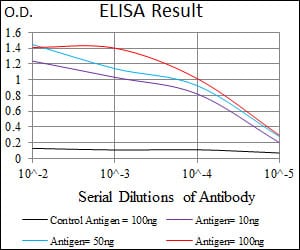
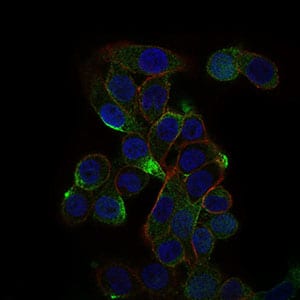
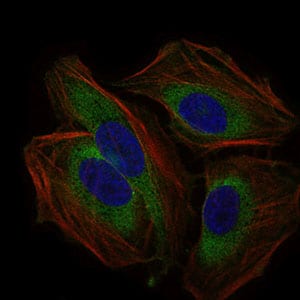
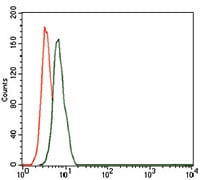

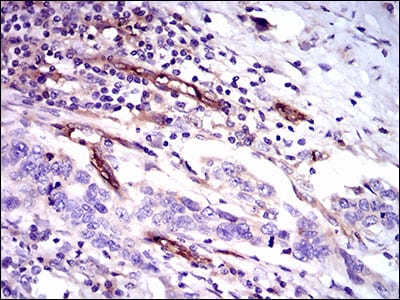
| WB | 咨询技术 | Human,Mouse,Rat |
| IF | 咨询技术 | Human,Mouse,Rat |
| IHC | 咨询技术 | Human,Mouse,Rat |
| ICC | 技术咨询 | Human,Mouse,Rat |
| FCM | 咨询技术 | Human,Mouse,Rat |
| Elisa | 1/5000-1/10000 | Human,Mouse,Rat |
| Aliases | 1F5; EJ16; EJ30; EL32; G344; MIN1; MIN2; MIN3; MIRL; HRF20; MACIF; MEM43; MIC11; MSK21; 16.3A5; HRF-20; MAC-IP; p18-20 |
| Entrez GeneID | 966 |
| clone | 8D2B8 |
| WB Predicted band size | 14.2kDa |
| Host/Isotype | Mouse IgG1 |
| Antibody Type | Primary antibody |
| Storage | Store at 4°C short term. Aliquot and store at -20°C long term. Avoid freeze/thaw cycles. |
| Species Reactivity | Human |
| Immunogen | Purified recombinant fragment of human CD59 (AA: 31-111) expressed in E. Coli. |
| Formulation | Purified antibody in PBS with 0.05% sodium azide |
+ +
以下是关于FANCE抗体的3篇参考文献及其摘要概述:
1. **"Interaction of the Fanconi anemia proteins and BRCA1 in a common pathway"**
*作者:Garcia-Higuera et al. (2001)*
摘要:研究揭示了FANCE蛋白在范可尼贫血(FA)通路中的关键作用,其作为FA核心复合体的一部分,参与调控FANCD2的单泛素化,从而激活DNA损伤修复功能。
2. **"The Fanconi anemia protein FANCE promotes MHF complex stability to coordinate DNA cross-link repair"**
*作者:Ling et al. (2016)*
摘要:本文证明FANCE通过与MHF(MHF1/MHF2)复合体结合,维持其稳定性,进而协调DNA交联修复过程,强调了FANCE在维持基因组完整性中的分子机制。
3. **"Functional analysis of patient-derived mutations in the Fanconi anemia gene FANCE"**
*作者:Bluteau et al. (2013)*
摘要:通过分析FA患者中FANCE基因突变,发现特定突变导致蛋白功能丧失,影响FA通路的激活,为临床诊断中FANCE抗体的应用提供了分子依据。
如需具体实验中使用FANCE抗体的文献,可补充说明进一步筛选。
FANCE antibody is a research tool used to detect the FANCE protein, a critical component of the Fanconi anemia (FA) DNA repair pathway. The FA pathway is essential for maintaining genomic stability, particularly in resolving DNA interstrand crosslinks (ICLs) caused by chemotherapeutic agents or endogenous aldehydes. FANCE, encoded by the *FANCE* gene, belongs to the FA core complex, a multi-protein assembly that facilitates the monoubiquitination of FANCD2 and FANCI, a key step in recruiting downstream repair effectors.
Mutations in *FANCE* are associated with Fanconi anemia, a rare genetic disorder characterized by bone marrow failure, congenital abnormalities, and heightened cancer risk. Studying FANCE helps elucidate molecular mechanisms underlying FA and its connection to carcinogenesis. The FANCE antibody is widely used in techniques like Western blotting, immunofluorescence, and immunohistochemistry to assess protein expression, localization, and interaction partners. It also aids in diagnosing FA subtypes and evaluating FA pathway functionality in cancer cells, where dysregulation may confer chemoresistance.
Commercial FANCE antibodies are typically raised against specific epitopes, with validation in knockout controls ensuring specificity. Research utilizing these antibodies has expanded insights into DNA damage response networks and potential therapeutic targets for FA-related malignancies.
×